What wax color should I get?
For the wax color comparison series, I’ve made pieces with each wax color. I used all the common tools and techniques and described how easy/difficult they were.
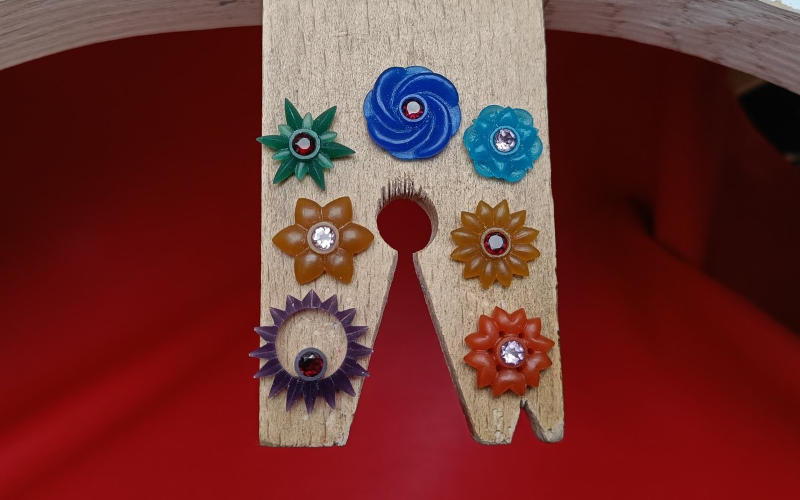
You can read the individual entries: green wax, purple wax, turquoise wax, gold wax, Wolf gold wax, blue wax and orange wax.
To make it a bit easier to see how the colors compare to each other, I wrote this overview with all the colors together.
Piercing
I used a regular saw blade for this. With a wax blade, all colors would end up with the same verdict: quick and easy. Besides, you want to use a regular blade for precision work.
Thick pieces (ring tube etc): piercing thick pieces isn’t easy in any color. It’s just the first step in the process. Something that has to be done to get to the fun part of wax carving.
Of all the colors, blue is the quickest and easiest to pierce. Green and orange the most difficult and slowest.
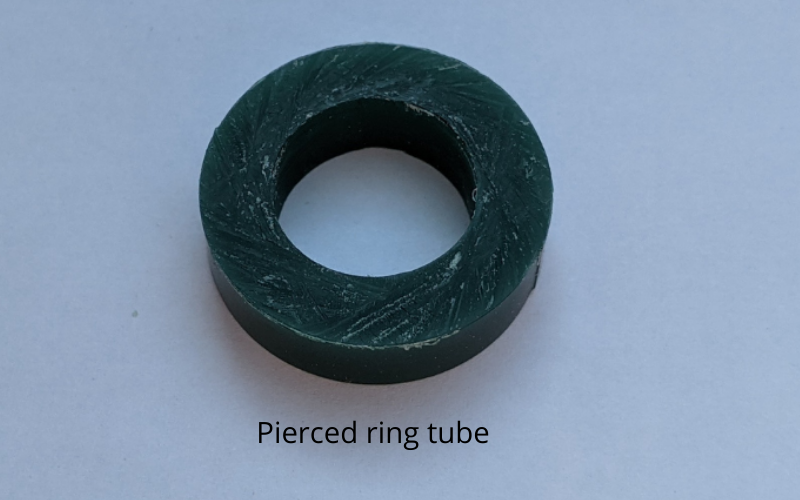
Both golds, turquoise and purple are somewhere in between. These colors usually start out slow, but get a bit quicker and easier once you get going.
Thin pieces: piercing thin pieces is very similar for all the colors. There isn’t a definite easiest and hardest.
The biggest challenge when piercing thin pieces is how much the wax dust obscures the line you’re piercing to. Even that isn’t a very big obstacle since you can easily wipe the dust away as you go.
Hand files
Big sections (side of a ring etc): Filing big surfaces of wax perfectly flat isn’t easy in any color. Just like piercing thick pieces of wax, I see it as a preparation stage before the fun starts.
Blue is easiest for filing big surfaces. It’s quick and you see the result of every file stroke you make.
Green and orange are the hardest to file. You only remove the smallest amount of wax with each file stroke. It can feel like you’re not making any progress at all! Filing a flat surface with these colors takes time and patience.
Same as with piercing, both golds, purple and turquoise are somewhere in the middle. Not as quick as blue, but quicker than green and orange.
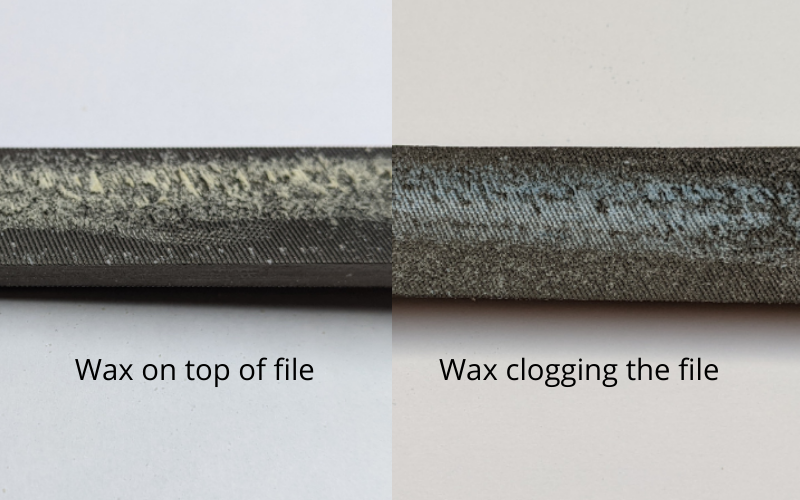
Small sections: when filing small sections, blue is still the easiest and quickest. Green still the hardest and slowest. They’re also the only colors that clog your files when filing. With the other colors, the wax dust just lies on top of the file without actually clogging it.
As before, both golds, purple and turquoise are somewhere in the middle. And orange gets added to the middle as well. Easier than green, harder than blue. And very similar to each other.
Needle files
Needle files are not just for refining a shape, you can use them to create the shape as well. Both golds file easiest with needle files. The wax files easily in any shape you want. With a little patience, you can even get a super clean surface finish with just files alone.
Turquoise files easy as well. It's actually easier to file turquoise than gold, BUT it’s really easy to leave marks in the turquoise wax. If you slip with your file you definitely dig into the wax. If you slip with your file in either of the gold waxes, you only leave a very superficial mark.
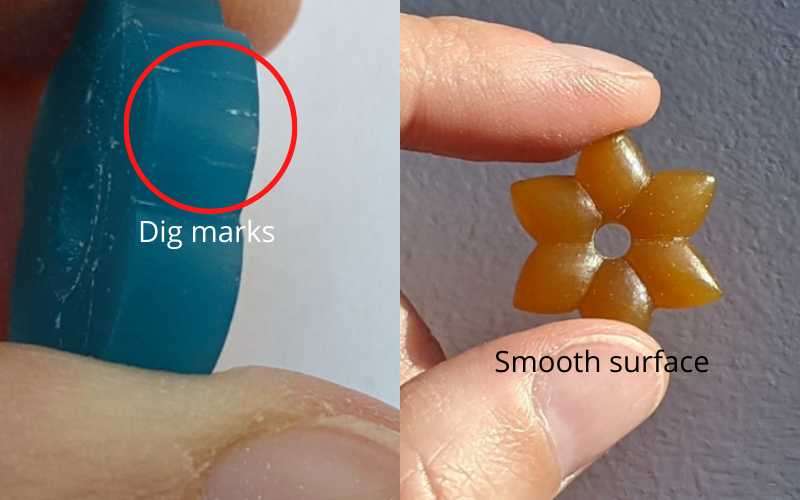
Green is the most difficult to file with needle files. Progress is slow. You can use needle files to refine a shape in green, but they’re not great to create a shape from the beginning.
Blue, purple and orange are somewhere in the middle. Needle files work fine on these colors. It just takes a bit longer.
Carving tools
Carving tools come in many different shapes. But they all have the same purpose: getting your wax in the exact shape you want.
The wax colors are in the same order with carving tools as they are for needle files. For the same reasons.
Both golds shape the easiest with carving tools. You can use them for refining shapes and for making the shape from the beginning.
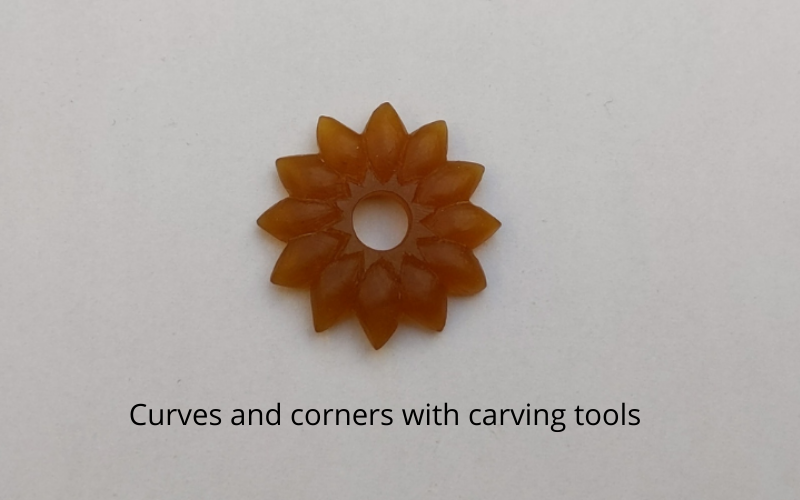
Turquoise is maybe easier to shape, but the potential to dig in and leave marks is much bigger than with the golds.
Green is the hardest and slowest to shape with carving tools. Ok for refining shapes, but not great for starting a carving.
Blue, purple and orange are in the middle. Carving tools work fine on these colors. It just takes some more time to carve the wax in the shape you want.
Melting
Repairing: blue, orange and green are the easiest for melting small pieces that you can use to repair breaks or for granulation. The wax melts quickly and transfers easily. Both from liquid to wax pen and from wax pen to new piece. There’s almost no stringiness when transferring the wax. And it melts and transfers fine at different heat settings for these colors.
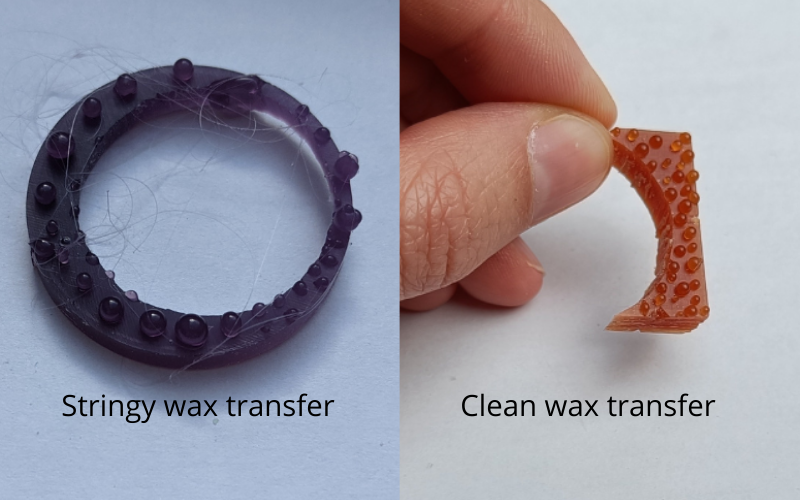
The other wax colors have different problem areas.
Turquoise melts easily without stringiness and it transfers easily as well. But the liquid wax gets too heavy quickly and just falls off your wax pen. If you need a bigger amount of wax for a repair, you have to build it up in stages.
Both golds don’t transfer easily onto a wax pen. The wax wants to stay in its liquid puddle. Once you get wax on your wax pen it transfers to a new piece with some stringiness.
Purple wax doesn’t transfer easily from wax pen to a new piece. It wants to stay where it’s warm. When you transfer the wax it gets super stringy as well (the wax tries to stay on the wax pen). You have to find the perfect heat setting to make transferring wax easier.
Remelting scraps: there really is no difference here. Scraps melt the same when you place them over a flame. And you can reuse the wax pieces once they’ve hardened.
Burring
Burrs are great for removing wax quickly. But you can also shape the wax, add texture to it or just simply make a hole with a burr.
Wolf gold is the best for burring. The burr glides over the wax and you have a lot of control over the amount of wax you’re removing. It’s super smooth to burr.
Gold, orange and green are very similar to Wolf gold. Smooth, with lots of control.
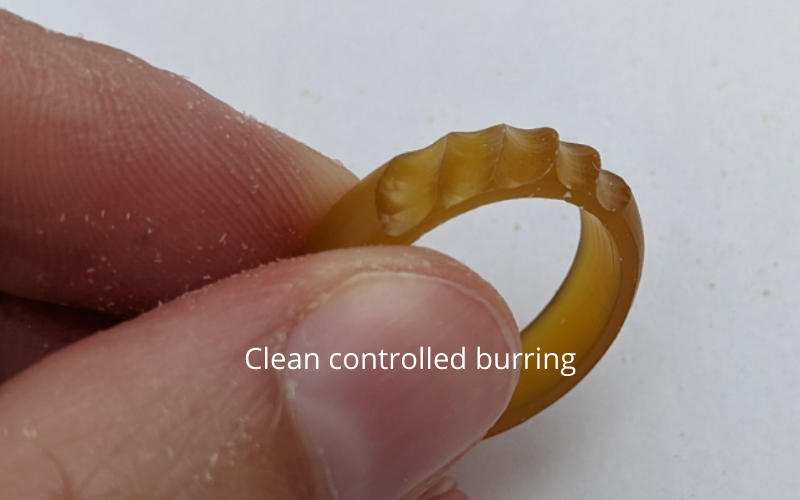
Turquoise is the worst for burring, the wax is soft so it’s easy to remove too much wax accidentally. It also makes it very easy to dig into the wax.
Blue is a bit better than turquoise, but has the same problems. It’s easy to dig into the wax. For both turquoise and blue going slower is better. You have more control over what you’re removing when you slow down.
Purple is in the middle. Not as smooth and controlled as some, but more controlled and smooth as others.
Marking
Whatever you make, you’re going to use your dividers to mark lines on the wax. Guidelines for piercing, filing and everything else.
The easiest color to mark is green. The marking itself is very smooth on green and the marks are clearly visible on this color.
Both golds are still very good for marking, it’s easy and the marks are clearly visible.
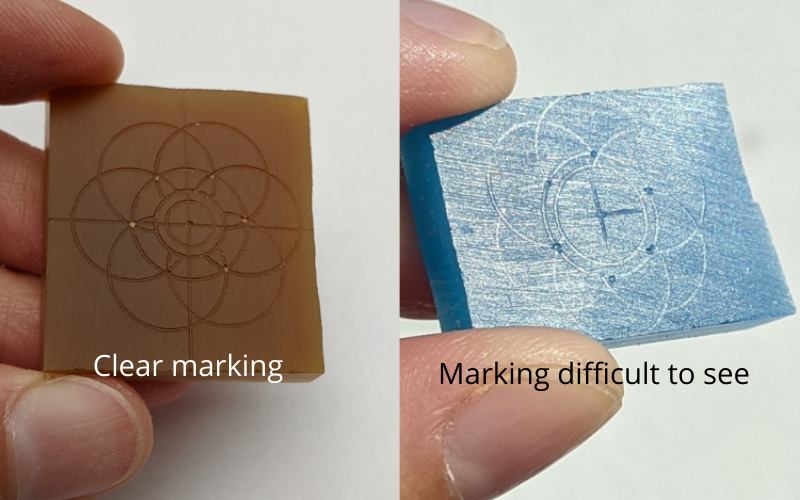
Purple is the hardest to mark. The color is so dark that lines are very hard to see on the wax. On top of that, wax dust stays inside the marks and can’t be cleaned completely. This makes the lines even more difficult to see.
Blue, turquoise and orange are in the middle for different reasons. Blue is easy to mark, but the dust can’t be cleaned completely. Some dust stays inside the lines, which can make them a bit more difficult to see.
Turquoise requires more pressure to make clear marks. Regular pressure only leaves very faint lines. Apply a bit more pressure and you have clear marks that are easily visible.
Orange wax needs a bit more pressure as well to get clear lines. The color makes the lines a bit difficult to see as well (but not as bad as with purple).
Stanley knife
I’ll divide the colors in 2 groups for using a stanley knife: can and can’t.
You CAN use a stanley knife with purple, blue and both golds. With these colors, the stanley knife cuts where you want it to cut. You can remove small sections of wax, which can be useful if you’re trying to get square corners etc.
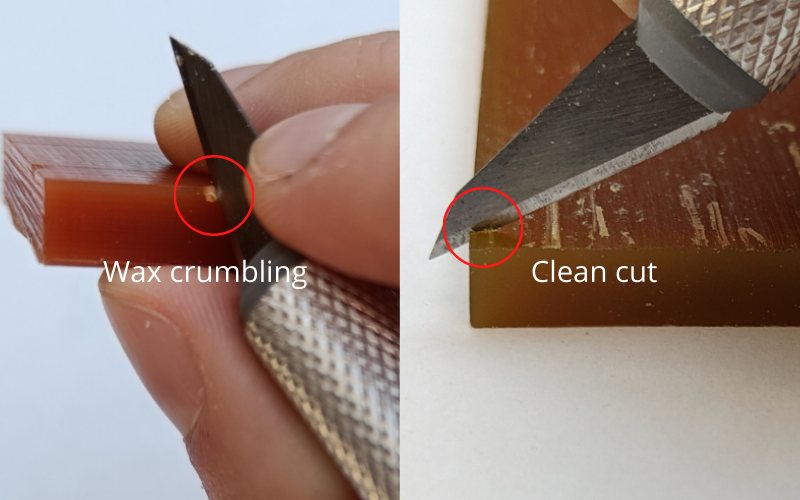
You CAN'T use a stanley knife on orange green and turquoise. When you cut in the wax, the break continues away from the blade. And the wax crumbles away next to your cut. You don't control what wax you’re removing this way. Not ideal.
If you use a stanley knife to remove thin slivers of wax, it is safe to use on all colors.
Verdict
Each wax color has its strengths and weaknesses. After trying them all, (Wolf) gold is my personal favourite. I love filing and carving shapes and patterns in wax. The way both of the golds handle with needle files and carving tools is the most important factor for me.
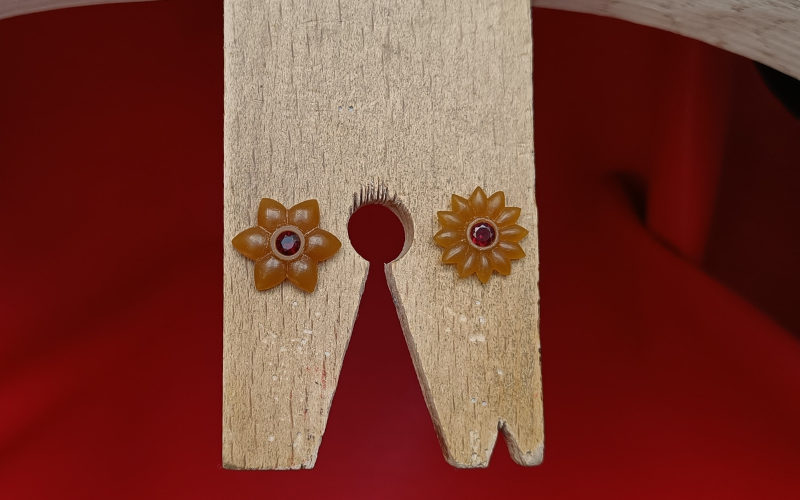
But if you like using a wax pen to embellish and decorate your wax, blue is a better fit because it handles melting great.
If working with wax is hard on your hands or joints, turquoise is the color for you. It definitely feels the softest to work with.
If precision is important to you, green is an option. It’s the slowest in most categories, but that also means that accidentally filing or carving away too much is nearly impossible.
Point is, wax color preference is completely personal to your style!
Now tell me, what is your favourite wax color to work with?